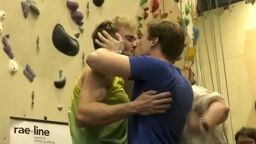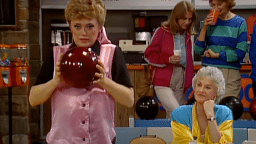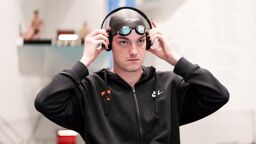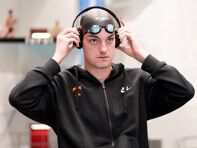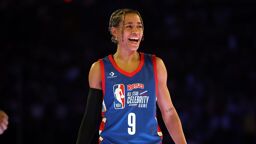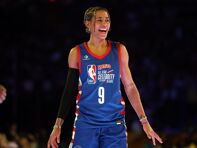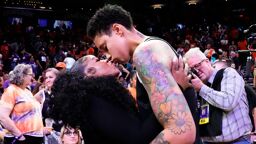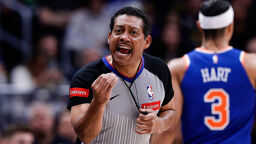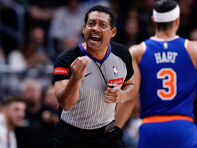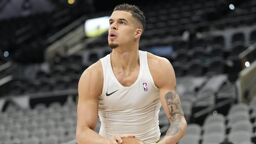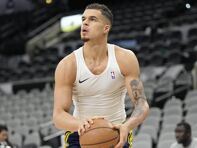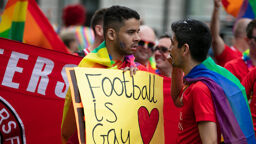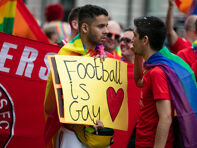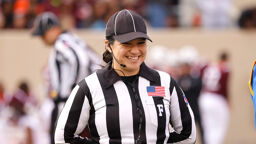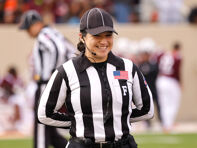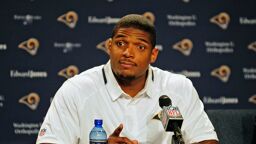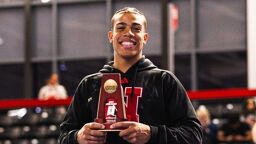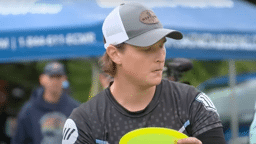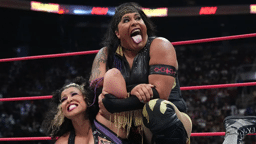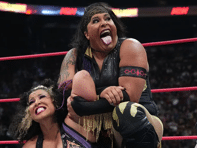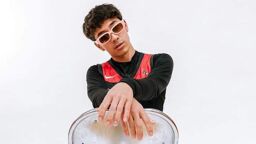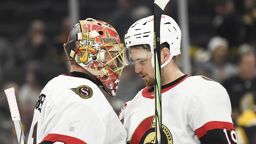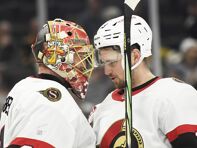(This story was published in 2001).
By: Mike Bryant
GAY MALE ATHLETES AND THE ROLE OF TEAM AND CONTACT SPORTS
Get off the sidelines and into the game
Our weekly playbook is packed with everything from locker room chatter to pressing LGBTQ sports issues.
Identifying reasons why gay men participate in aggressive sports environments
This research project focused on identifying three possible reasons why gay males choose to participate in aggressive team and contact sports environments:
To hide the fact that they were gay, to prove that they were straight
To get physically closer to other males, without anyone knowing they were gay
To not feel isolated and to be a part of a team
To begin, all subjects that participated must have fulfilled specific criteria:
Male, at least 18 years of age
Participated in one or more of 10 specified sports at the high school and/or collegiate varsity level: Football, basketball, baseball, soccer, rugby, ice hockey, field hockey, water polo, lacrosse, and wrestling.
Each individual must currently identify their sexuality as gay
Results
Demographics:
The data from a total of 115 surveys were used to compile information. A total of 110 individuals participated at the high school varsity level, while 39 individuals indicated playing at the collegiate level.
The age range of all athletes was 18 to 52. The following is a breakdown of age groups:
Average age = 32.2 years old
18 – 28 years old = 42 respondents
29 – 38 = 43 respondents
39 – 48 = 23 respondents
49+ = 4 respondents (three individuals did not indicate their age)
The purpose of this age continuum was to identify any generational differences over the past four decades.
Every sport was represented at both the high school and collegiate levels. As expected, the four sports with the most reported participation were (starting with the greatest): football, basketball, baseball, and soccer. Ten athletes reported “current” participation at the high school or collegiate level at their time of submission of the survey.
Sports Participation:
Two specific criteria were identified and used to compare response data among subjects regarding their sport participation experiences and their opinions to the three previously stated reasons why they chose to participate in team/contact sports. These two areas are:
Performance capital (indicating how good they were as an athlete at the high school/collegiate level).
Knowledge of homosexuality (did they know they were gay while playing in school?)
Performance capital
Five levels of performance capital were used for each individual to indicate the contributions they made to their teams. These five levels are:
Best (the best player; MVP)
Better (major contributor; starter)
Reserve (contributed in a reserve role; came off the bench)
Little (saw little game action)
None (saw no action; rode the pine)
At the high school level, 29 individuals indicated their contributions as the “best”, while 75% of the high school contingency was noted as a major contributor (all “best” and “better” athletes). At the collegiate level, nearly 70% indicated the same performance capital contribution levels.
These figures indicate that gay boys can play ball. (Follow-up interviews included conversations with a NAIA collegiate All-American basketball player, and all-star baseball and soccer players.)
Knowledge of homosexuality. Four levels of knowledge were used for each individual to indicate the knowledge, if any, they had of their homosexuality while participating in high school and/or college. These levels are:
Knew gay (they knew they were gay while participating).
Different and gay (they knew they were different and thought they were gay).
Different (they knew they were different).
No Idea (they had no idea of their homosexuality while participating).
At the high school level, 34 individuals indicated that they knew they were gay while participating, as 67% at least knew they were different and thought they were gay (all “knew gay” and “different and gay” respondents). At the collegiate level, 29 of the 39 athletes knew they were gay, while four athletes indicated “different and gay”. Only 11 of the 115 total subjects indicated having “no idea” of their sexuality while participating in high school and/or college.
Reasons for participation statements
The following charts indicate the responses for the three possible reasons why gay male athletes choose to participate in aggressive team and contact sports environments (these charts represent the total subject pool).
“I participated in sports to hide the fact that I was gay; to prove to others I was straight.”
“I participated in sports to get physically closer to other guys; without guys knowing I was gay.”
“I participated in sports to not feel isolated; to be part of a team.”
As the data indicate, for participation statements I and II, the majority of reporting athletes disagreed at some level with these two possible reasons for participation in team/contact sports. However, the 20+% of male athletes that did agree with these statements signifies that there are gay males that do, in fact, consider participation in team and/or contact sports environments for these reasons (to hide the fact that they are gay and/or to get physically closer to other guys).
For participation statement III, the figures represent profound agreement with the idea that these gay males participated to combat feelings of isolation by being part of a team.
When cross-referencing the elements such as the indicated age groups, performance capital, and knowledge of homosexuality, the response data for each of the participation statements provided similar results.
Discussion
Prior to conducting this research, a review of literature and analysis of previous studies was conducted. Topics such as adolescent sport participation, masculinity of sport, and gay/homophobic issues of sport, were examined and evaluated. The results of this research project indicate agreement with other sociological perspectives regarding similar issues.
It has been expressed that the arena of sport serves as a social institution for young people. Adolescent athletic participation stems greatly from the notion that kids participate so they can be with their friends. This idea coincides with the research results regarding participation statement III in that 69% of the subject pool indicated that they participated to not feel isolated and to be part of a team.
More significantly, for young males, peer and societal pressure are two major reasons why most boys decide to participate in sports. By participating in sports, young males assume a level of masculinity greater than that of those young males that do not participate. Their level of masculinity is then increased based upon which sport they decide to play (i.e. more aggressive sports such as football, rugby, and ice hockey).
For young gay males or young males questioning their sexuality, an aggressive sport environment (such as one that the football field may provide) offers an ideal situation for them to hide their sexuality through their participation, as well as give them the opportunity for guaranteed situations of physical (not necessarily of a sexual nature) and/or emotional closeness with other males; situations they may not be able to find outside of sport; situations deemed acceptable in the public’s eye. For the individual subjects in agreement with participation statements I and II, their responses are indicative of these sociological views and ideas that sport participation is actually used to help hide an individual’s homosexuality and/or to provide access to physical contact with other males without others knowing they are gay.
Conclusion
Sport can serve many purposes; as entertainment; as healthy activity; and as discussed, a social environment. For young people, most commonly, sport is deemed as a social outlet. For young gay males, or young males questioning their sexuality, sport is certainly viewed as a social institution, but on a much larger scale and for different reasons. As young males often feel they must adhere to the societal and peer expectations to play sports, young males dealing with an alternative sexuality may welcome this pressure as it may provide relief from their struggles with their homosexuality.
(Outsports contributor, Mike Bryant, conducted this research as part of his graduate studies at Seattle Pacific University. A huge thank you goes out to all of the individuals that responded to the survey and contributed additional information through e-mails and follow-up interviews.)



